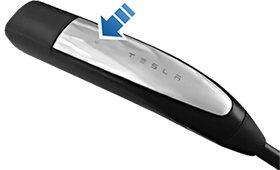davewill
Active Member
What is supposed to happen is that when the button is pressed, the car stops drawing current within a small number of milliseconds. That is to prevent arcing both at the handle and at the relays in the EVSE. It is not necessary for the car to actually signal that power should be removed when the button is pressed and my LEAF did not do so, but Teslas and most other cars do.I wonder whether all of this is working right now on the Tesla? I remember a few years ago when I unplugged quickly I’d get some nice long arcs since the power pins were still energized, lol. The standard is supposed to provide the means to prevent this arcing when properly implemented.
I've heard of enough of these arcing complaints that I've wondered for a while whether Tesla is shutting down the power draw quickly enough
Last edited:




